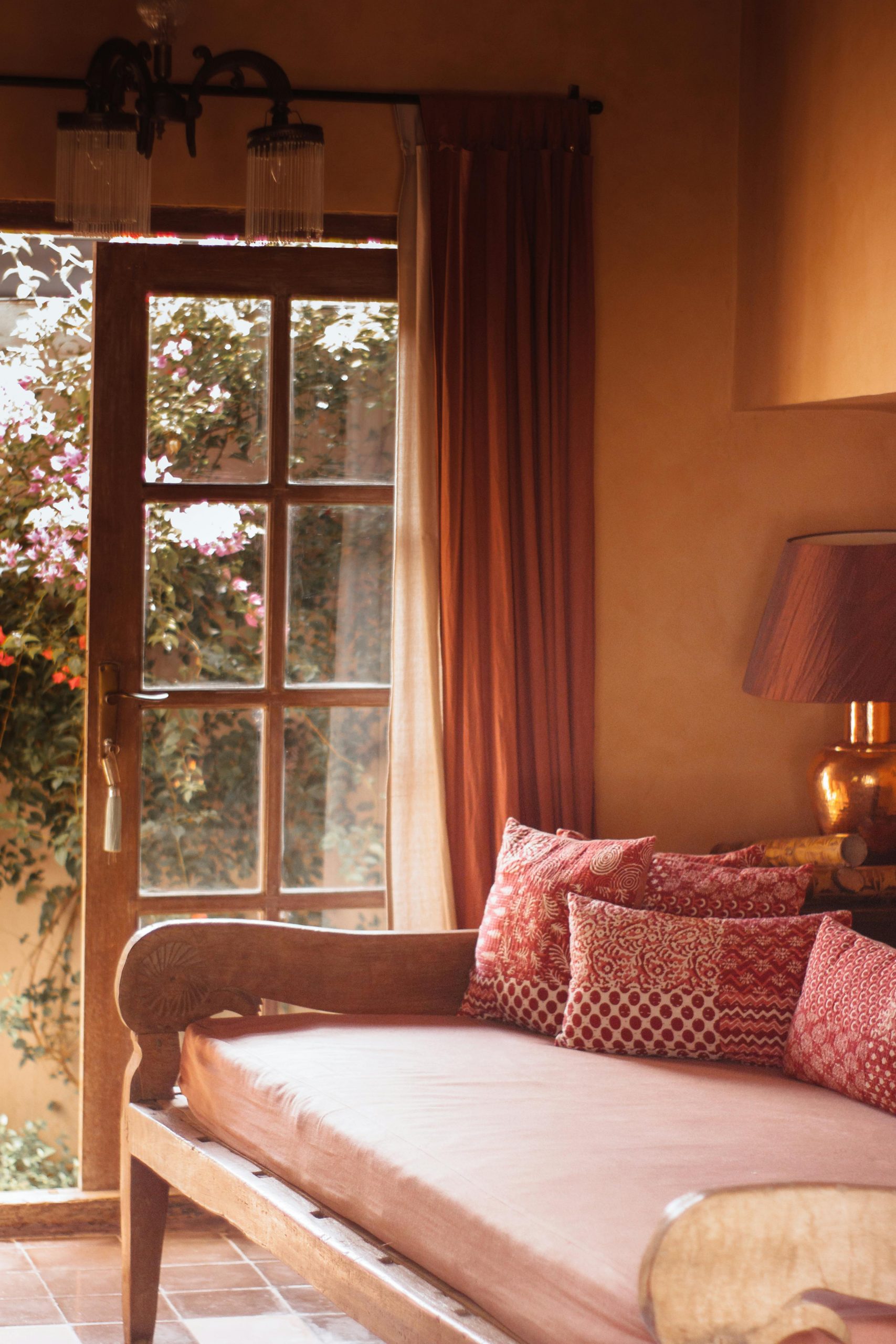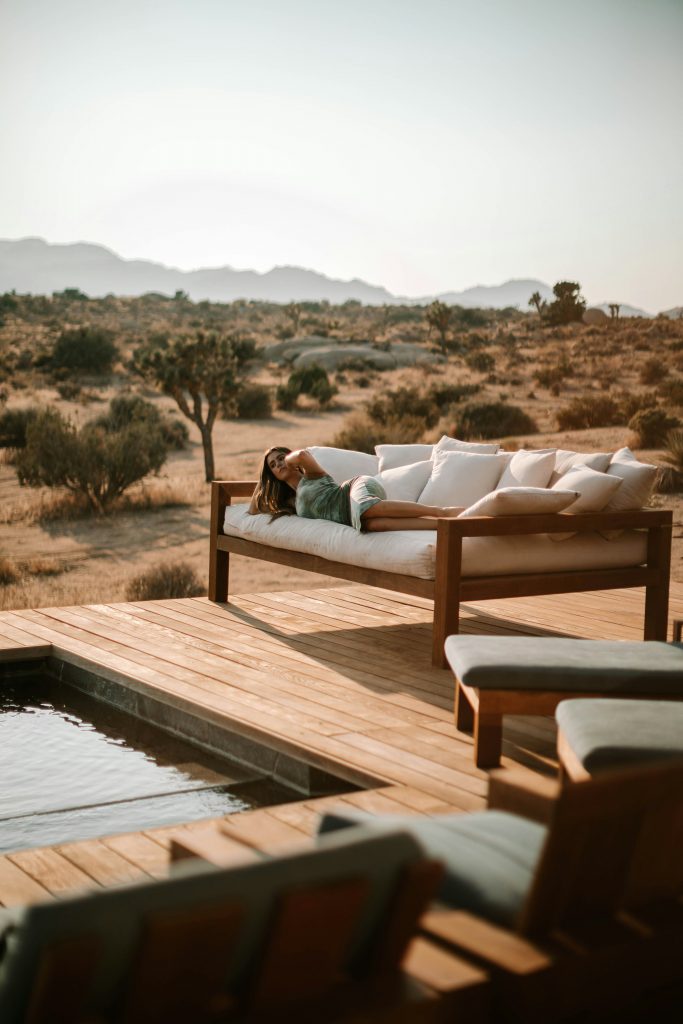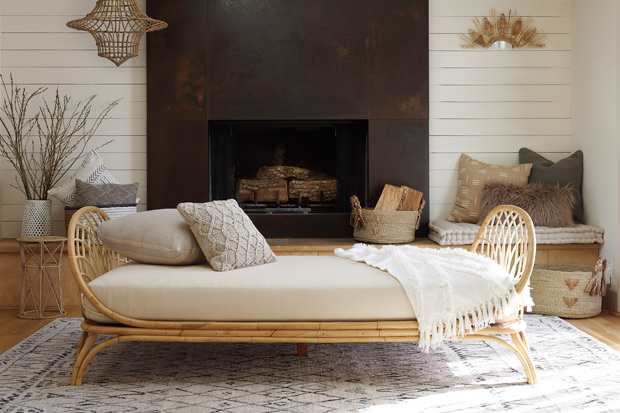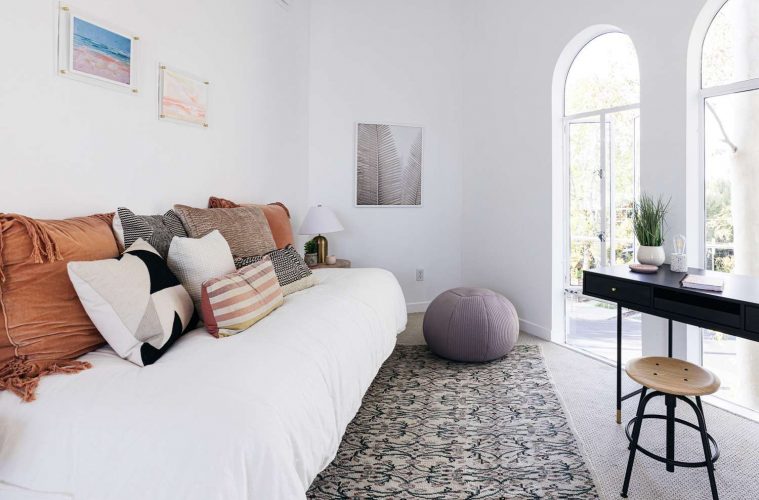Daybeds are becoming a must-have in modern homes due to their versatility and timeless style. Not quite a sofa and not exactly a bed, a daybed offers a unique solution for seating, lounging, and even sleeping, making it one of the most flexible pieces of furniture you can own.
What is a daybed?
A daybed is a multi-functional piece of furniture that serves as both a seating area and a place to sleep. “A daybed is a piece of furniture that may be used for sleeping, sitting, or lounging,” explains Shani Core, founder and principal designer of Shani Core Interiors according to an article by lifestyle expert, Martha Stewart. Unlike a sleeper sofa, which needs to be converted into a bed, a daybed is always ready for you to sit, lounge, or sleep on.

Unsplash
Types of daybeds
There are three primary types of daybeds: traditional, trundle, and outdoor. Each type suits different needs and spaces.
Traditional daybeds: These often look like a chaise lounge and are typically used in living rooms or common areas. They usually have a wooden frame and an upholstered cushion the size of a twin bed.
Trundle daybeds: These feature a pull-out bed underneath the main cushion, making them perfect for accommodating guests.
Outdoor daybeds: Ideal for patios, porches, or poolside areas, these daybeds are designed to withstand the elements while providing a comfortable place to lounge outdoors.

Pexels
Benefits of having a daybed
Daybeds offer several advantages, making them a smart addition to any home.
Versatility: A daybed can serve as a sofa by day and a bed by night, providing extra sleeping space without the need for a guest room.
Space-saving: In small apartments or multifunctional spaces, a daybed can save space by combining seating and sleeping areas.
Style: Daybeds come in various designs, allowing you to choose one that complements your existing decor.
“It’s nice in a flex space to have a piece of furniture that can be multi-purpose,” says Maggie Griffin, founder and principal designer of Maggie Griffin Design. This makes daybeds perfect for home offices that double as guest rooms or for small living spaces where every piece of furniture needs to serve multiple functions.
Choosing the right daybed
When selecting a daybed, consider the following factors:
Size and dimensions: Daybeds typically take up the same amount of space as a twin bed. Measure your space to ensure there is enough room to walk around the daybed comfortably.
Materials and construction: Look for durable materials and solid construction. Wood and metal are common choices, and some daybeds come with built-in storage or trundle beds for added functionality.
Placement: Think about where you will place your daybed. In a living room, a daybed can provide a unique seating option, while in a guest room, it can serve as both a bed and a sofa.
“In my own home, I have a daybed in my living room in front of a bank of windows overlooking the back porch,” says Core. This placement allows for a cosy spot to enjoy the view while lounging comfortably.
Daybeds are also great for kids’ rooms, making sleepovers and slumber parties easy with the addition of a fresh set of sheets.

Unsplash
Styling your daybed
Daybeds can be styled to blend seamlessly with your home decor. Use throw pillows and blankets to add comfort and style. For durability, especially if you have a full house during holidays, choose upholstery that can withstand heavy use. Core suggests using neck roll pillows for added comfort and support.
By understanding the versatility and benefits of daybeds, you can select the perfect piece to enhance your home. Whether used in a living room, guest room, or outdoor space, a daybed offers a stylish and practical solution for seating and sleeping needs.
ALSO SEE: THINGS TO CONSIDER WHEN CREATING AN OUTDOOR LOUNGE
Feature image: Unsplash

